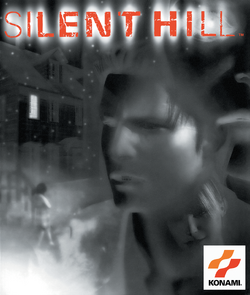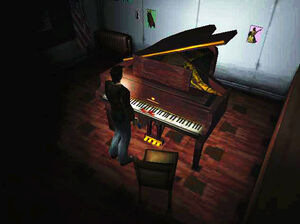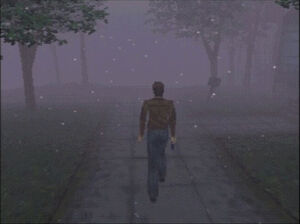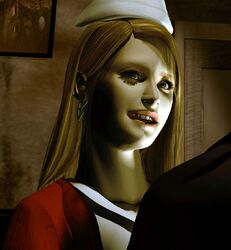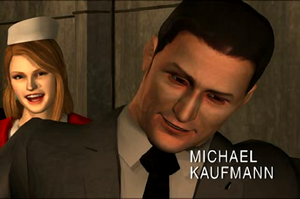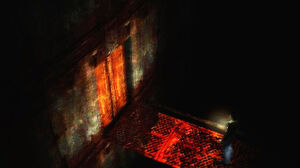UDPATE (3/18/13): There's a slightly better version of this article on Gamasutra. Maybe read that one instead. K thanx.
"On the List" is a series that lets me talk about my favorite video games of all time, games that could potentially end up on a best-of list.
“So you run and
you run to catch up with the sun but it's sinking, racing around to
come up behind you again.” - Pink Floyd
As I get steadily
older, and as I become further poor of it, my time becomes an
increasingly valuable commodity. It seems no matter what I do or
don't do, all of my goals and aspirations outpace my ability to reach
them. It's not often that I think about death itself, but I do think
about approaching middle age. As pointless as it may be, I sometimes
worry now about the regrets of what I might not accomplish in five,
ten, or even thirty years time—assuming I'm fortunate enough to
have them. What's wrong with me, right? Just get out there and live!
I remember when
The Sims came out in early 2000. It was a fun little game about the
pursuit of happiness—from a decidedly first-world perspective.
Create a person or a family. Tell them when to bathe, when to be
social, when to practice a musical instrument. Take care of their
needs and hopefully watch as they progress through the ranks of their
respective careers. And above all, help them to buy and decorate
their house with the coolest stuff. The Sims was genre-pegged as a
life simulator, but I'm not so sure what that means. I think it's a
game that has more to do with socio-economics than with “life”—at
least in the grand sense of the word. Where was the drama, the
everyday anxiety of existence?

In 2007 I
stumbled upon an entirely different sort of game, Shin Megami Tensei:
Persona 3. It was just on a fluke that I played it. Somebody gave me
a hand-me-down Playstation 2 that hardly worked. As sort of a starter
kit, the person who gave me the system also let me borrow this absurd
looking Japanese role-playing game (JRPG). The first thing I noticed
about it was its sleek anime art style, but I really had no idea what
I was getting myself into.
The game centers
on a band of Japanese teenagers who—as with every other band of
JRPG teenagers—must contend with a dark and powerful,
world-threatening force. Unlike other JRPGs, Persona 3 doesn't send
you wandering all over the planet or parading around in big flying
boats. Nor does the final battle take place on the moon. It actually
takes place on the roof of your school.
Something is
strange in the city of Iwatodai. Each night starting at midnight, the
moon turns a sickly green color and just about everyone transforms
into a coffin—literally. The students' high school morphs into a
massive tower fortress known as Tartarus, and a bunch of shadow
monsters start wreaking havoc. For some reason, this Dark Hour does
not affect a select group of individuals, including the main
protagonist, a newly arrived transfer student. These gifted
individuals are the only people who realize the Dark Hour even
exists. Worse yet, this strange phenomenon seems to be causing an
ominous outbreak among the population known as Apathy Syndrome,
whereby people suddenly fall into a numb, vegetative condition. As
such, the protagonist joins forces with his dorm mates who form the
Specialized Extracurricular Extermination Squad (S.E.E.S.). The
group's members have dedicated their nights to hunting the shadows
inside Tartarus, hopefully to vanquish the Dark Hour from existence.

The most
interesting aspect of the game is its structure. Events in the game
take place over a one-year period, with the days and weeks counting
down to some kind of hinted doomsday. Daytime segments play out like
a social simulator. During the weekdays, the player character attends
school, then spends the afternoon either hanging out with friends,
attending a campus club, or doing some other activity around the town
before retiring to the dorm. Then, on most nights, the player has the
option to form a party and go fight monsters at Tartarus. This is the
combat portion of the game, one enormous grind of randomized
dungeons, turn-based battles, and periodic boss encounters.
To say that
Persona 3 takes its time is an understatement. As the game goes on,
various plot twists formulate. New story clues comes to light. The
members of S.E.E.S. undergo their various trials, both individually
and as a team. But most days are just regular days, with the player
deciding how the protagonist will spend his free time.
And it's within
this limited freedom that the game truly shines—as a game. The
choices available to the player present themselves in a largely
scripted fashion. As the hours tick by from early morning to mid
morning, from mid morning to after school and onward, there are
moments that come up. Some mornings the game's focus will narrow in
on a classroom lecture, during which a teacher will be going on about
some subject. If the teacher pops the protagonist a question and the
player answers correctly, that protagonist's popularity rating will
increase. Sometimes the game will give the protagonist the option to
take a nap during a lecture. Whereas doing so temporarily improves
the character's physical condition, paying attention to the lecture
will result in a permanent increase to the player's academic ranking.
A similar choice
presents itself during most evenings. If the player decides not to go
battle during the Dark Hour and retreats to the dorm room for the
night, there will generally be the option to either stay up studying
or go to bed early. These studying opportunities can be valuable for
gaining those academic skills. But getting rest is equally important
for preparing the body for battle during the Dark Hour and for
preventing sickness.
The most
interesting choices are the ones that involve social interactions
with other characters, sometimes forming social links. During my play
through of the game I befriended a fellow track athlete, an eccentric
old couple who ran a local bookstore, a drunken monk at a nightclub,
an MMO computer game player, a little girl in a park, some of my
fellow S.E.E.S. members, and more. Some of these social links are
more difficult to access than others. Certain options will not appear
until the protagonist has reached a certain benchmark in academics,
charm, or courage points. Others are available only through exploring
particular areas of the city at a certain time and day of the week.
Each of these relationships forms a social link that, when leveled
up, allows the player to create more “persona” characters, which
are used like summonings during battle. Some story branches lead to
other story branches.
My protagonist,
for example, had an interesting love life. After going out with a
fellow athlete for a while and maxing out that social link, he
started following a link with a shy girl from the Student Council
Club. When I realized this character was forming a crush on my
character, I decided to stop pursuing that social link. It was a
tough call, especially knowing that by spending time with the girl
she was beginning to overcome her self-confidence issues. Oh well.
Closer toward the end of the game, as my character's stats began to
reach the higher echelons, I suddenly found myself with the option of
pursuing all three of the women in the protagonist's dorm—a pretty
satisfying reward for his persistent leveling. Of course, social
dynamics played a factor. Dating multiple women at the same time
would lead to trouble, and there was probably only sufficient time to
pursue one of the three girls.

But I really kind
of admire how the game stayed true to this rigid design throughout
the game. Unlike so many RPGs that give the player so-called freedom
to explore every last quest and side story to their neurotic content,
here is a game that forces actual choices. A year is a long time, but
not long enough for everything. If the player chooses not to
participate in certain holiday festivities, or to pass up on a
invitation to hang out with an acquaintance, those social
opportunities and potential memories will be lost for good.
I think this
resonated most when it came down to the small daily choices—when to
sleep, when to study, when to go battle. It's something I relate to
every day when I come home from work. What is the best use of my
time? Is it in writing (boosting academics)? Going for a run (combat
training)? Spending quality time with my wife (improving my social
links)? And in this way, the game feels like a much more accurate
“life” simulator than any kind of glorified dollhouse game—as
great as it may be in its own right.
The game's
opening cinematic makes multiple textual references to “Memento
mori,” a Latin phrase that translates to something along the lines
of “remember your mortality.” It also refers to an artistic theme
popular through classical and medieval European history. Painters
would depict still-life images of skulls and skeletons to reinforce
the message—remember that you too will die! Is Persona 3 a
modern-day Memento mori?
Interestingly,
the opening animation juxtaposes this textual reference with the
game's most iconic image—attractive characters shooting themselves
in the head! This is actually the animation that happens all
throughout the game whenever a character in combat summons a persona.
They do so by aiming a pistol-shaped device called an Evoker at their noggin and pulling the trigger. The characters don't even keel over, but the wispy particle substance that emanates
from the other side of the head is clearly meant to resemble
something much more violent and permanent.
Is this supposed
to be symbolic, the stark reminder of death implied in the “Memento
mori” reference? I imagine that's a part of it. But wouldn't an
image of suicide sort of contradict the implication of that very
reference? I suppose one could argue the game is engaging in a form
of psychological reverse engineering, inverting a dark and highly
suggestive image of giving up in a way that it becomes a much more
positive representation of fighting back. I imagine it's also an
exercise in being subversive for subversive's sake. If anything, it's
provocative, an interesting way to illustrate the undercurrent of
teen angst that flows throughout the game.
Ultimately, I
think there's an even greater irony that relates to the entire
Persona 3 playing experience. For a game that does such an effective
job of reinforcing the seize-the-day outlook, it does an even more
effective job of sucking away one's otherwise productive hours.
Persona 3 is the longest game I have ever played. While I managed to
spread it out over a six-month period or longer, I'm pretty sure my
final play through clocked in at over 120 hours (I made sure to
basically erase the save file from existence as soon as it was over).
I remember being just stunned as the hours continued on past the 50
or 60 mark and just . . . kept . . . climbing. It got to the point
that I had to ask my girlfriend at the time (now my wife) for a day
of solitude to complete the game. I don't think she took the request
very well, but it did the job. I spent probably an entire weekend to
wrap it up, and I still had to stay up quite late to do so.
As I mentioned
once already, one of the game's optional side stories involves the
protagonist playing an online role-playing game. It's bordering on
metafiction. In doing so the protagonist befriends a player who goes
by the name Maya. It's kind of a fun story segment that involves
selecting the dialogue options, which the protagonist types to his
online companion. Maya, in return, types back a bunch of playful
comments, mixed in with all manner of chat abbreviations and
emoticons, and there's a flirtatious little relationship that forms
between the two. It's later revealed that the anonymous Maya is
actually your character's homeroom teacher, who gets like totally
embarrassed when she finds out she basically fell in love with her
student. Persona 3—like so many Japanese games—has its cheeky
moments, little bits of nerd fantasy indulgence. But the funny thing
about that social link is that the option is only available on the
weekends. And by playing the online game, the protagonist spends his
entire weekend playing the game, thus eliminating the possibility of
doing any other activities all day. I swear the game developers at
Atlus must be aware of this ridiculous setup they've created. Here I
am, whiling away my own precious hours role-playing as a make-believe
Japanese teenager who is flirting with a make-believe online game
player—to the point that I have to seclude myself from my very real
girlfriend to keep playing the make-believe game! Obviously, this was
one minor part of the entire game, but it does sort of put things in
an interesting perspective.
Looking back, I
actually think my time playing Persona 3 was time well enough spent.
Not that I ever want to ever go back! This was four years ago when I
was knee deep in a very stressful, life-sucking career as a newspaper
reporter. It was a job that drained so much of my time and energy,
and playing Persona 3 was for a time my mode of escape—not so
different from the protagonist taking a deserved break from his own
exhaustive battle against the Dark Hour to unwind with a video game.
Abnegation, at times, does have its merits.
If you really
think about “Memento mori,” there are two ways of responding to
the message. One day you will die, so get out there and do something
with your life while you still have time! On the other hand, no
matter how important you think you are, and no matter how great or
small your individual accomplishments, you too will one day die. So
what's the point in worrying about everything so much? I'd like to
think there's a balance to be found in between the two, and that
there's a perfect time for everything. I could spend probably a
lifetime trying to find it.
Images were borrowed from megamitensei.wikia.com.














_-_n._23185_-_Socrate_(Collezione_Farnese)_-_Museo_Nazionale_di_Napoli.jpg)





